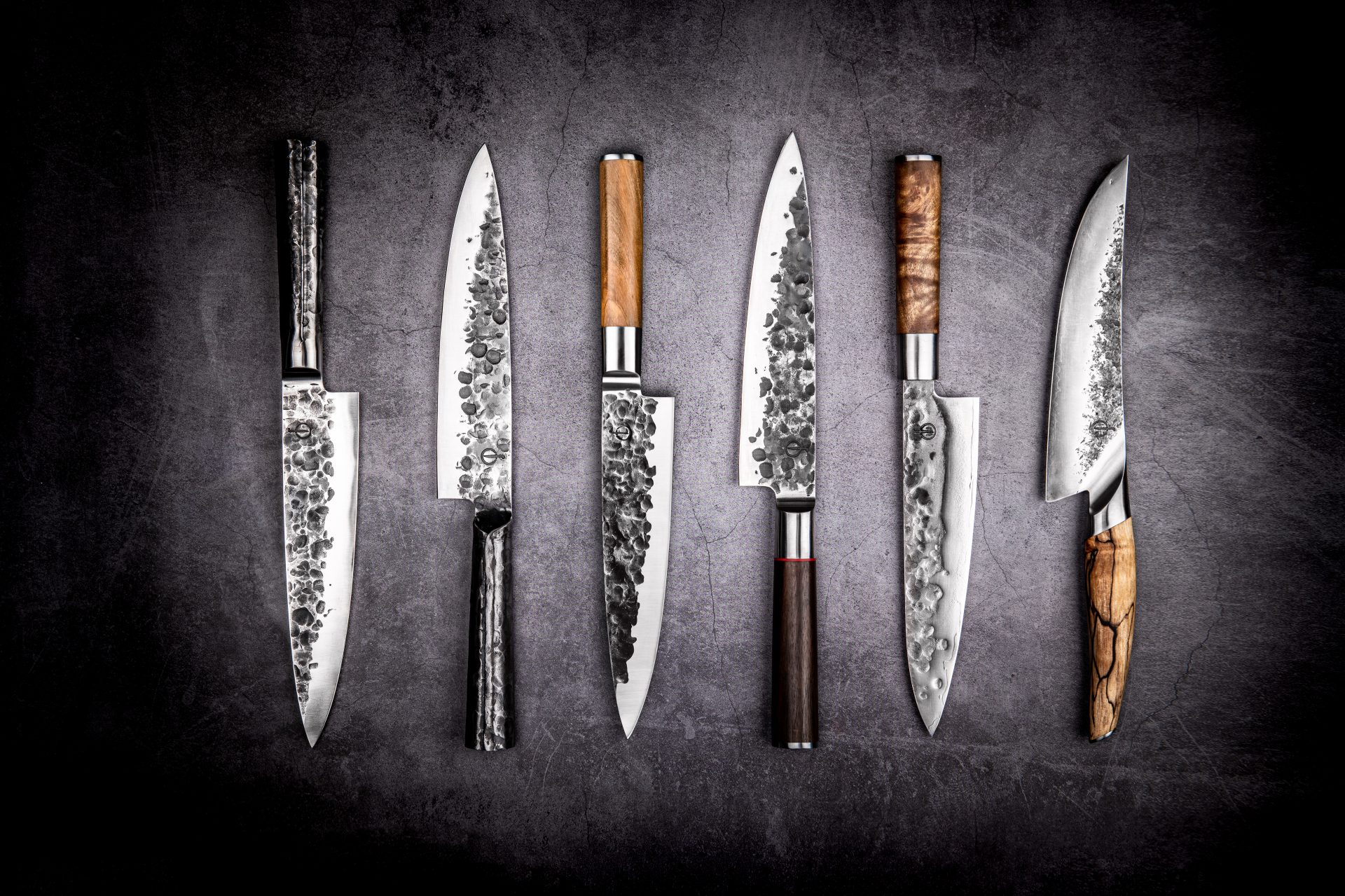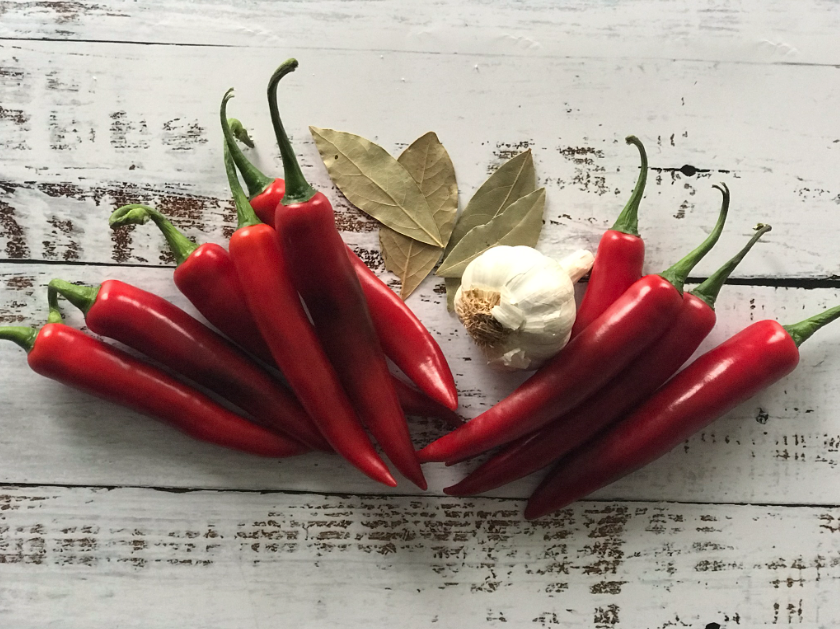
Sambal on the side? With these recipes you will!
February 23, 2023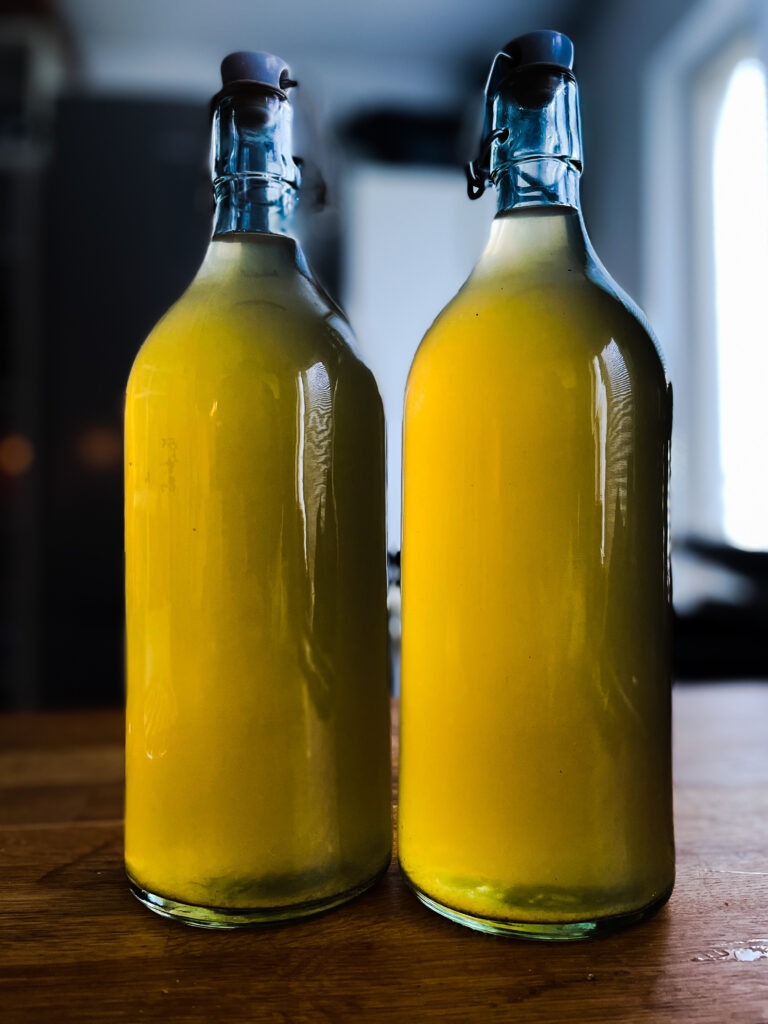
Pineapple cold tea
May 12, 2023East Meets West
When it comes to kitchen knives, there are two major categories: Western knives (often made in Germany) and Japanese knives. Japanese knives generally have blades made from harder steel compared to Western knives. This makes Japanese knives more susceptible to breaking or chipping if they encounter bones or fish bones. Japanese knives are also thinner in terms of blade thickness compared to Western knives. Western knives, made from softer steel and having thicker blades, are more forgiving. If dropped (never do that), a Western knife might bend, whereas a Japanese knife is more likely to break.
The sharpening angle also differs between the two types of knives. Western knives are typically double-beveled, meaning they are sharpened on both sides of the blade, while Japanese knives are single-beveled, sharpened only on one side. This makes sharpening Japanese knives more challenging than sharpening Western knives.
So, which type of knife is better? Although it might seem like I’m discouraging the use of Japanese knives, that’s not the case at all. I personally own Japanese knives and find them beneficial. Japanese knives, if properly maintained, have a longer lifespan, retain sharpness for longer, and require less frequent sharpening. On the other hand, Western knives are sturdier due to lower maintenance requirements and their different grip style. It’s also a matter of personal preference and taste.
Full Tang or Hidden Tang You might be wondering, what’s a “tang” in the context of knives? Keep reading to understand. When crafting a knife, there are various ways to create the handle. Western knives often have a full tang. This means that the blade extends through the handle, with two handle halves attached on either side. You can see the blade between these handle halves. On the other hand, hidden tang (more common in Japanese knives) also extends the blade into the handle, but the blade is concealed within the handle. Because the handle is hidden, it needs to be thinner, hence the term “angel.”
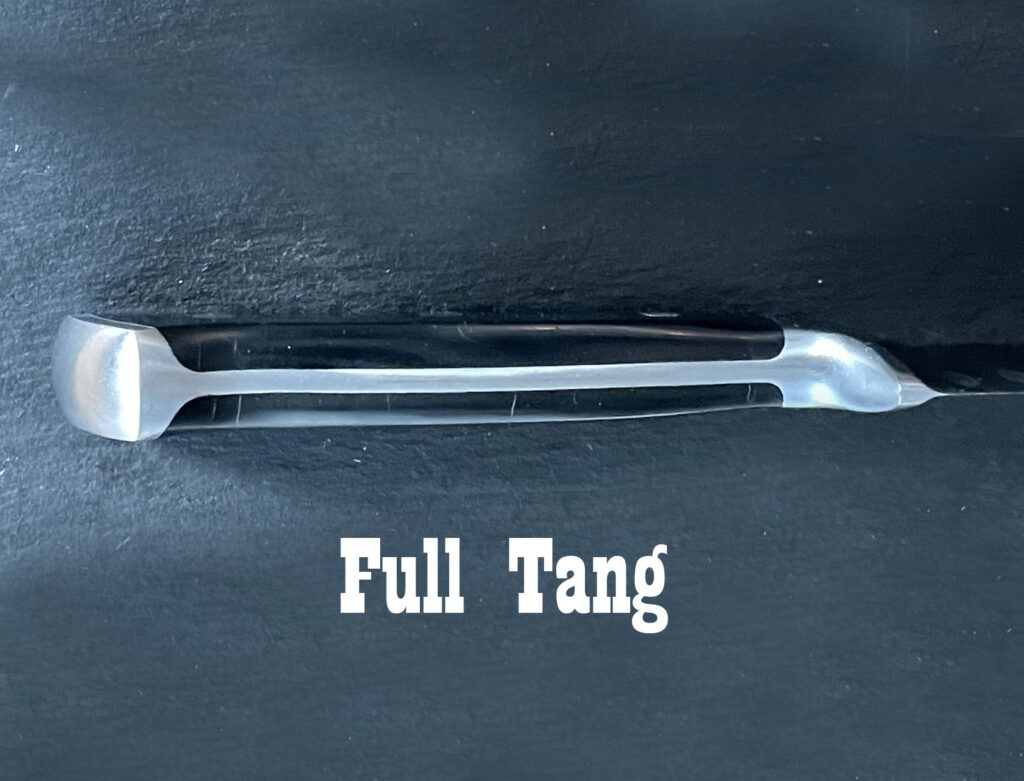
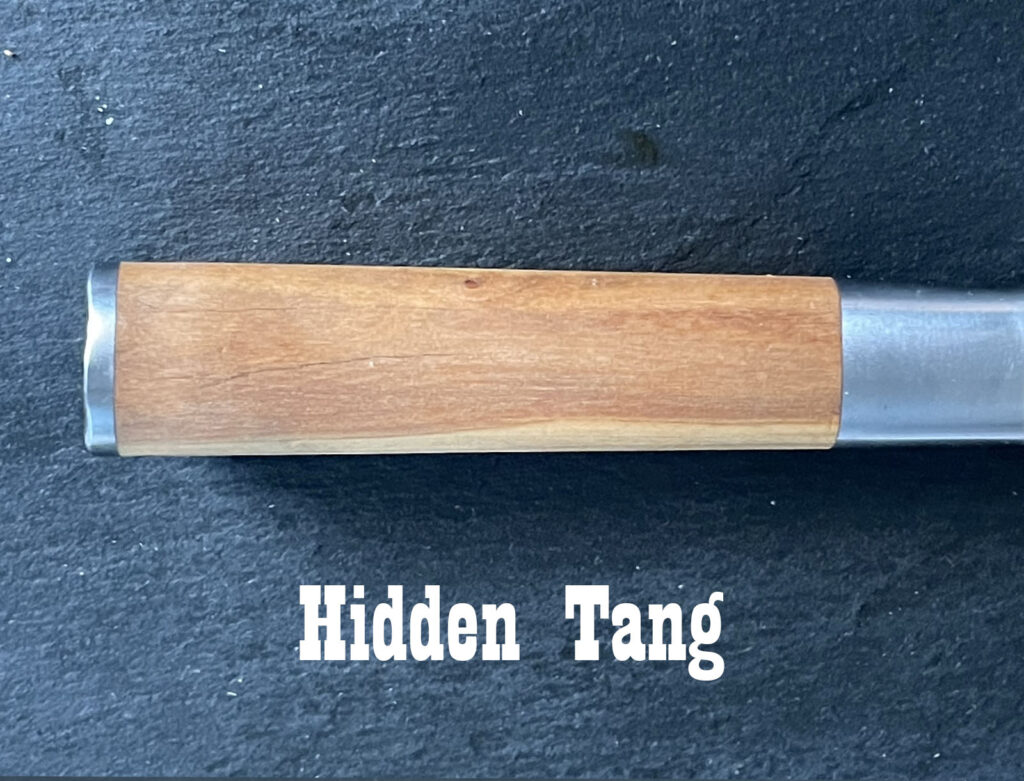
Most Common Knife Types
There are so many different types of knives that we will do a deepdive into the most common used knives in the kitchen. But believe me, there are more than the ones below.
Chef’s Knife

One of the most versatile knives in the kitchen, ranging from 6 to 14 inches in length. Its curved blade is ideal for cutting both meat and vegetables, making it an essential tool. It’s my personal must-have knife.
Bread knife

With its serrated edge, the bread knife is perfect for slicing through bread, as well as other baked goods like cakes and pastries.
Carving Knife

The carving knife is designed to thinly slice poultry, roasted meats, ham, and other cooked meats. Its thin blade allows for precise slicing.
Cleaver / vegetable cleaver
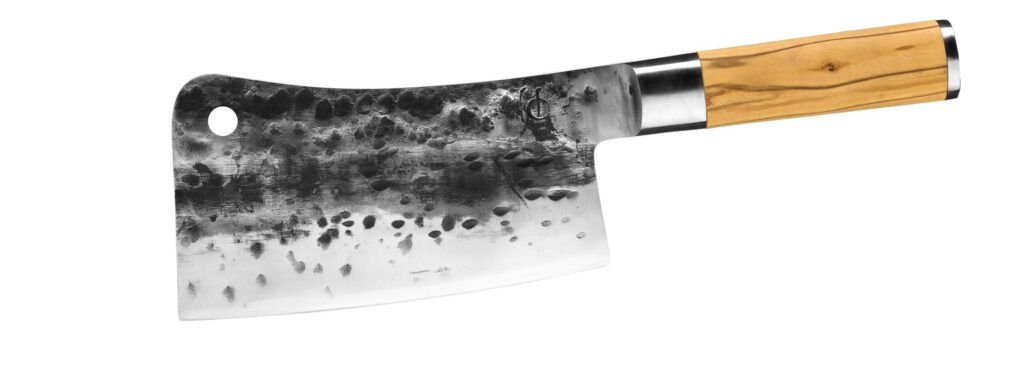

A cleaver (Left image and often confused with a chef’s knife by people that have no idea how to use a knife) is used for portioning meat by chopping through bones. Due to the weight you can easily break the bone when chopping into it. Besides that version there is also the vegetable cleaver (right image) which is not that big and is mainly used for chopping vegetables. Personaly i’m a huge fan of this knife in my kitchen.
Boning Knife / Fillet Knife


A boning knife (left image) has a flexible blade and is ideal for removing bones, skin, and connective tissue from meat. A fillet knife (right image) is similar but more flexible, designed for filleting fish for example
Salmon Knife

This knife, as the name suggests, is used to thinly slice salmon or other delicate fish. Its flexibility and sharpness allow for precise cuts.
Santoku Knife

Originating from Japan, the Santoku knife comes in 5-7-inch lengths and is versatile for slicing, dicing, and mincing. It’s one of my personal favorites.
paring knife

A small knife ideal for peeling, trimming, and intricate tasks. It’s also great for detailed cuts.
Remember, choosing the right knife depends on your preferences, needs, and comfort. Always keep your knives sharp, clean, and properly stored to ensure safe and effective use in the kitchen.


